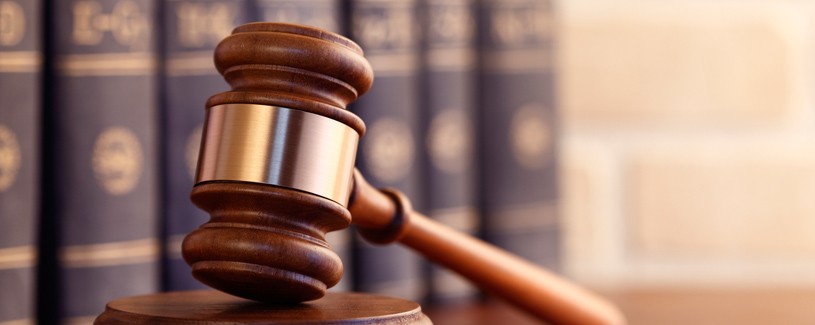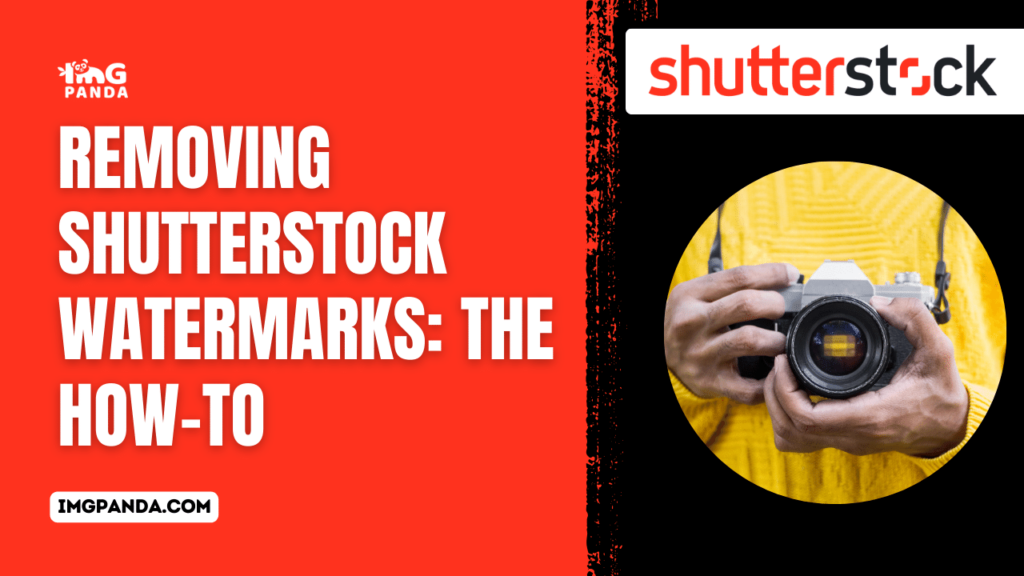Introduction
Welcome to our guide on how to remove watermarks from Shutterstock images. Many people use Shutterstock for high-quality photos, illustrations, and graphics. However, sometimes you may come across an image with a watermark that you'd like to use for personal or commercial purposes. In this blog post, we'll explore the methods, tools, and legal considerations when it comes to removing Shutterstock watermarks. We'll help you navigate this process, making it easier for you to use the content you find on Shutterstock without those pesky watermarks.
Also Read This: Identifying the Script Font Used in ShootProof Galleries
Understanding Shutterstock Watermarks

Before delving into the process of removing Shutterstock watermarks, it's essential to have a clear understanding of what these watermarks are and why they exist. Shutterstock, like many stock image providers, employs watermarks to protect their content and intellectual property.
Here are some key aspects to consider:
- Definition: Shutterstock watermarks are translucent logos, text, or symbols that are superimposed onto images available for preview on the Shutterstock website. These watermarks are strategically placed to discourage unauthorized use or distribution of the content.
- Purpose: The primary purpose of Shutterstock watermarks is to safeguard the intellectual property of photographers, artists, and content creators. These watermarks deter potential infringers from downloading and using images without the proper licensing or permission.
- Visible on Preview Images: Shutterstock watermarks are prominently displayed on the preview versions of images that are accessible to users who have not purchased a license. This makes it clear that the image is protected, and it cannot be used legally without the necessary licensing.
- Quality and Resolution: Watermarks on Shutterstock images are intentionally designed to affect the quality and resolution of the image. They may obscure vital details, making the image less suitable for use in a project, especially in print or high-resolution applications.
It's crucial to respect the presence of these watermarks when using images for evaluation or project planning. Attempting to remove watermarks without proper authorization can lead to legal consequences due to copyright infringement.
Shutterstock provides a straightforward way to access and license images for various purposes. Users can purchase licenses for images without watermarks, allowing them to use the content legally and in line with Shutterstock's terms of use.
| Image Use | Watermarked Preview | High-Quality Licensed Image |
|---|---|---|
| Personal Projects | ✅ | ✅ |
| Commercial Projects | ✅ | ✅ |
| Print Publications | ❌ | ✅ |
Remember that using watermarked images without the appropriate licensing is not a legal or ethical option. In the following sections, we will explore the methods and tools available for obtaining Shutterstock images without watermarks and how to respect copyright while using stock content.
Also Read This: A Simple Guide to Sending Print Releases in ShootProof
Legality and Copyright

Understanding the legality and copyright implications of using Shutterstock images with watermarks is crucial before attempting to remove them. Shutterstock, like many stock image providers, places significant importance on copyright protection, and violating these rights can have legal consequences.
Here's what you need to know about the legality and copyright aspects of using images with Shutterstock watermarks:
- Copyright Protection: Images on Shutterstock, even those with watermarks, are protected by copyright law. The original creators, such as photographers and artists, hold the rights to these images. As such, using these images without proper authorization constitutes copyright infringement.
- License Requirement: To use Shutterstock images legally, you must purchase a license. Shutterstock offers various types of licenses, depending on the intended use of the image. Each license comes with specific terms and restrictions, so it's crucial to choose the right one for your needs.
- Watermarks as Deterrents: Shutterstock's watermarks are designed as deterrents to prevent unauthorized usage. They serve as visible reminders of the need for proper licensing and permission. Removing watermarks without authorization is considered a violation of copyright and could result in legal action.
- Potential Consequences: Engaging in copyright infringement can lead to severe consequences, including legal penalties and financial liabilities. Copyright holders have the legal right to pursue legal action against those who infringe on their rights.
To illustrate the importance of licensing and the legal use of Shutterstock images, here's a summary of the types of licenses Shutterstock offers:
| License Type | Intended Use | Permitted Usage |
|---|---|---|
| Standard License | Personal use, social media, websites, and more. | Use in digital media, limited print copies, and merchandise for resale (up to 500,000 copies). |
| Enhanced License | Commercial and extended uses. | Use in unlimited print runs, television, film, and more. Allows for resale merchandise without limitation. |
It is important to adhere to the terms and conditions of the chosen license when using Shutterstock images. Attempting to remove watermarks to use images without proper licensing is a violation of the copyright holder's rights and can result in legal repercussions.
In the following sections, we will explore the various methods available for legally obtaining Shutterstock images without watermarks, ensuring that you can use them in compliance with copyright laws.
Also Read This: Use Taylor Swift Template on Canva for Your Projects
Methods for Removing Shutterstock Watermarks
Removing Shutterstock watermarks is a topic of interest for those who wish to use stock images without the visual obstruction of these markings. However, it's essential to approach this subject with caution, as removing watermarks without proper authorization can have legal and ethical ramifications. In this section, we'll explore different methods and tools that are commonly used for removing Shutterstock watermarks.
It's important to note that most of these methods involve violating copyright terms and conditions, and their use may result in legal consequences. Here are the common methods:
- Image Editing Software: Image editing software like Adobe Photoshop and GIMP can be used to retouch and manipulate images, including removing watermarks. This method typically involves painstaking manual work, and the results may not always be perfect, as some watermark remnants might remain.
- Online Tools and Services: Several online tools and services claim to remove watermarks from images. These tools often use automated algorithms to attempt to erase the watermarks. However, the effectiveness of these services can vary, and they may not produce satisfactory results, especially for complex watermarks.
- Third-Party Plugins and Apps: Some third-party plugins and apps are designed to remove watermarks from images quickly. These tools usually work with specific image editing software or as standalone applications. While they may provide convenience, the quality of the results can vary.
It's important to emphasize that removing watermarks without proper authorization from Shutterstock or the copyright holder is illegal and unethical. Shutterstock's terms and conditions explicitly state that modifying or using watermarked images without a valid license is a violation of their policies and copyright law.
Additionally, using these methods to remove watermarks can often lead to a loss of image quality and integrity. Watermarks are intentionally placed to deter unauthorized use and to protect the intellectual property of content creators. Removing them can undermine the integrity of the image and may result in a less appealing or less usable final product.
Shutterstock provides a legitimate way to access and license images for various purposes. Users can purchase licenses for images without watermarks, ensuring that they can use the content legally and with the quality and resolution they require.
In conclusion, while there are methods available for removing Shutterstock watermarks, it is strongly advised to respect copyright laws and Shutterstock's terms and conditions. The legal and ethical way to use Shutterstock images is by purchasing the appropriate license for your intended use, ensuring that you have the rights to use the content without infringing on the rights of content creators.
Also Read This: How do I sell photos on iStock? A comprehensive guide to becoming an iStock contributor.
Step-by-Step Guide
While it's essential to stress that removing Shutterstock watermarks without proper authorization is illegal and unethical, we understand that there may be cases where users have mistakenly downloaded watermarked images and wish to rectify their error. In such instances, here is a step-by-step guide on what to do:
- Check Your Licensing: The first step is to verify whether you have a valid licensing agreement for the image in question. If you have legally licensed the image, there should be no need to remove watermarks.
- Contact Shutterstock Support: If you have mistakenly downloaded a watermarked image and require a licensed version, the best course of action is to reach out to Shutterstock's customer support. Explain the situation and provide details about the image in question.
- Legal Licensing: If you haven't obtained a license for the image, you should consider the legal route. Visit the Shutterstock website and find the image you want to use. Then, follow the steps to purchase the appropriate license for your intended use.
- Use Licensed Image: Once you have acquired the necessary license, you can download the image without watermarks directly from Shutterstock. This legal and ethical approach ensures that you have the right to use the image for your project.
This step-by-step guide emphasizes the importance of legal and ethical image use and highlights the necessity of obtaining proper licensing for Shutterstock images. In cases where you may have unintentionally downloaded watermarked images, resolving the issue should be done through Shutterstock's official channels.
It's crucial to respect the rights of content creators and the terms and conditions set by Shutterstock to ensure that you are using images in a legal and ethical manner. By obtaining the necessary licenses, you can access high-quality, watermark-free images for your personal and commercial projects while upholding copyright laws and respecting the work of content creators.
Also Read This: Understanding Fortiguard Downloader’s Unified Protection
FAQ
Here are some frequently asked questions related to removing Shutterstock watermarks and using Shutterstock images legally:
Q: Is it legal to remove Shutterstock watermarks?
A: No, it is not legal to remove Shutterstock watermarks without proper authorization. Doing so constitutes a violation of copyright laws and Shutterstock's terms and conditions.
Q: What are the risks of watermark removal?
A: Removing watermarks from Shutterstock images can lead to legal consequences, including potential legal action and financial liabilities for copyright infringement. It can also result in a loss of image quality and integrity.
Q: How can I maintain image quality after removal?
A: Maintaining image quality after watermark removal is challenging. Watermarks are intentionally placed to protect image integrity. It's best to use images without watermarks by legally licensing them from Shutterstock to ensure the highest quality for your project.
Q: Are there any free methods for removing watermarks?
A: While there may be claims of free watermark removal methods or tools, it's important to note that using such methods often involves copyright infringement and can result in legal consequences. Legitimate and ethical usage involves purchasing the appropriate licenses from Shutterstock.
Conclusion
In conclusion, understanding the importance of Shutterstock watermarks and their role in protecting the intellectual property of content creators is essential. Shutterstock watermarks are visible symbols that indicate copyrighted images and serve as a reminder of the need for proper licensing.
It is crucial to recognize that removing Shutterstock watermarks without authorization is both illegal and unethical. Doing so can lead to legal consequences, including copyright infringement and potential legal action, as well as a loss of image quality and integrity.
The best and most responsible approach to using Shutterstock images in your projects is to purchase the appropriate licenses for your intended use. Shutterstock provides clear and legitimate ways to access high-quality, watermark-free images, ensuring that you can use them in compliance with copyright laws and the terms and conditions set by Shutterstock.
By respecting copyright, licensing agreements, and the rights of content creators, you not only ensure that you are using images legally but also support the creators in their work. Shutterstock offers a wide range of licensing options to suit various project needs, making it easy to access the content you require for both personal and commercial purposes.
In the realm of digital content, responsible usage and adherence to copyright laws are essential practices that benefit everyone involved. We hope this guide has clarified the importance of respecting Shutterstock watermarks and emphasized the significance of ethical and legal image use.
